Oppo made its mark in India when it launched hugely successful Oppo F series smartphone called the
**Oppo F1 Plus** , which arrived with a slim metal body and capable cameras back in 2016. Two years, later we now have the
**Oppo F5** in the mid-range that stands tall as the company’s flagship smartphone in India. [caption id=“attachment_4388601” align=“alignleft” width=“380”] Oppo A83. Image: Tech2/Rehan Hooda[/caption] The Oppo A83 is something that sits between Oppo’s low-end offerings like the Oppo A71 and the high-end model like Oppo F5 with budget pricing. While the phone that is priced at Rs 13,990 MRP (Rs 12,320 MOP) would have won Oppo an applause last year, the launch of
**Xiaomi's Redmi Note 5 Pro** changed all of this, by offering better performance in every category, turning what would have been a great smartphone buy in the budget smartphone range into an average one. Build and Design: 7.5/10 The design of the smartphone looks typically
**Oppo** with a well-rounded back, corners and curved glass. Its well-finished metal body feels great to hold, but is a bit slippery thanks to the rounded design. Thankfully, Oppo includes a case in the box, which adds some grip, but kills the beauty of the curved body in the bargain. While it looks nice, the metal back with the matte black finish was a fingerprint magnet, and looked like a smudgy mess after a few hours of use. It’s probably the same coating used on the Honor smartphones these days that also catch fingerprints and hand grease too easily. Wiping those prints off is not an easy task either and I eventually gave up on keeping the device clean. [caption id=“attachment_4388621” align=“alignnone” width=“1280”]
The design of the Oppo A83 sure looks good, but the metal back is a fingerprint magnet. Image: Tech2/Rehan Hooda[/caption] The rounded glass on the front would have been a great addition had Oppo included a well-rounded lipping around it. Similar to the
**OnePlus 5** , the plastic edge which protects the edges of the 2.5D glass feels a bit too rough especially when you swipe inwards or outwards from the edges of the screen. Similar to smudge-happy back, the screen too catches fingerprints too easily and are hard to wipe off. [caption id=“attachment_4388629” align=“alignnone” width=“1280”]
I loved the small form factor and the one hand usability of Oppo A83. Image: Tech2/Rehan Hooda[/caption] While its arch rival the
**Redmi Note 5 Pro** may not have a graceful design, it makes up for it practically, and gathers a lot less smudges thanks to great oleophobic coating and a proper 2.5D screen that makes it a delight to use. In fact, Huawei’s own
**Honor 9 Lite** , looks and feels better than both of them and starts at a lower base price. Features: 7/10 The Oppo A83 comes with a 5.7-inch HD+ display sporting a resolution of 1440x720 pixels. Behind that display sits a MediaTek MT6763T, which is the same SoC as on the flagship Oppo F5. The Chinese smartphone brand has paired the octa-core SoC (clocked at 2.5 GHz) with a paltry 3 GB RAM along with 32 GB of storage. Thankfully, the expandable storage is an option as Oppo always provides a third slot in its SIM tray for inserting an microSD card apart from the two nano SIM cards. As with all things Oppo, the focus is on the selfie camera, with a 13 MP rear-facing camera and an 8 MP selfie camera. Both cameras feature an f/2.2 aperture with only the rear camera featuring an LED flash. [caption id=“attachment_4388625” align=“alignnone” width=“1280”]
Made in India. Image: Tech2/Rehan Hooda[/caption] Connectivity options on the A83 include a dual SIM setup with support for 4G and 3G bands, Wi-Fi 2.5/5 GHz 802.11 a/b/g/n, GPS and OTG support using a standard USB 2.0 microUSB port. Oppo seems to have been inspired by the
**Apple iPhone X** (in more places than one) and skipped on the fingerprint completely, making facial unlock the only way to unlock the smartphone instantly. Powering all of the above is a 3,180 mAh battery with decent charging speeds, but not the VOOC charging technology available on other mid-range Oppo devices. Display: 7/10 Oppo offers a 5.7-inch display in the footprint of a smartphone that feels a lot smaller than the Xiaomi Redmi Note 5 Pro. The taller 18:9 display aspect makes the smartphone tall but Oppo has done a good job at keeping the form factor small, making it easy for one-handed usage as opposed to the Note 5 Pro. While it’s not the most polished screen in its segment with those sharp edges I mentioned earlier in the review, it also falls short compared to the competition and even smartphones priced a lot below it. [caption id=“attachment_4388611” align=“alignnone” width=“1280”]
The HD+ display on the Oppo A83 falls short against the competition and showcases a strong blue tinge Image: Tech2/Rehan Hooda[/caption] For starters, that tall 5.7-inch display isn’t sharp with a 1440x720 pixels resolution. This is visible no matter what you look at on the display, whether it’s the wallpaper, the icons on the homescreen, the text and more. While the sharpness levels fall way short of the Redmi Note 5 Pro, it also falls behind the smaller Honor 9 Lite as well. While the brightness levels are decent enough indoors, they somehow cannot stand up against the bright outdoors or direct sunlight. Viewing angles were fine and I noticed little colour shifting which is great for a smartphone in this range. At the same time, the display has this very noticeable blue tinge that results in cooler colours overall and gets worse when you view it from an angle. Unlike most smartphones in this price range, Oppo chose not go with display colour adjustments. It means that if you don’t like the cooler colours, you have no choice but to live with it. Software: 7/10 While I would earlier praise Oppo despite its aping of Apple’s iOS for its consistent icons and interface, things have changed over the years. ColorOS 3.2 looks fine to the average consumer but seems unfinished in more ways than one. While Honor is the only brand to offer Android 8.0 Oreo in this price range, Xiaomi still manages to deliver with a consistent and buttery smooth MIUI 9 operating system. Oppo somehow cannot offer either. [caption id=“attachment_4388603” align=“alignnone” width=“1280”]
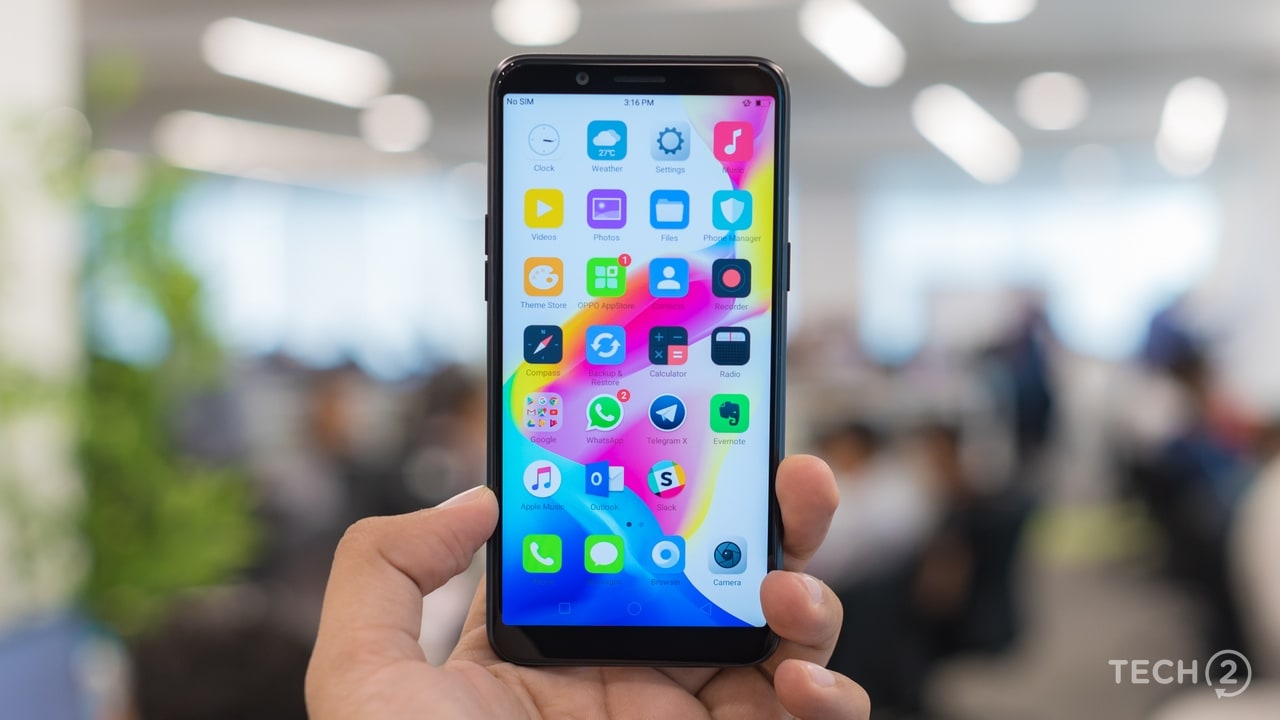 ColorOS is still inspired by the iPhone, but misses a few Android essentials like a battery life stats along the way. Image: Tech2/Rehan Hooda[/caption] There’s Android 7.1 as the base software for its ColorOS and the experience feels a bit limiting. There is a theme store, but the theme selection is rather limited and compared to Xiaomi’s store. The Lockscreen Magazine feature is still the best in the business, but setting a wallpaper to both the lock screen and the homescreen is a multi-step process. If you are looking for a battery graph you still won’t find it in Colour OS. Thankfully, the Notification and Status Bar settings give you the option to show to display the battery percentage so you know how much juice you have left. [caption id=“attachment_4388609” align=“alignnone” width=“1280”]
ColorOS is still inspired by the iPhone, but misses a few Android essentials like a battery life stats along the way. Image: Tech2/Rehan Hooda[/caption] There’s Android 7.1 as the base software for its ColorOS and the experience feels a bit limiting. There is a theme store, but the theme selection is rather limited and compared to Xiaomi’s store. The Lockscreen Magazine feature is still the best in the business, but setting a wallpaper to both the lock screen and the homescreen is a multi-step process. If you are looking for a battery graph you still won’t find it in Colour OS. Thankfully, the Notification and Status Bar settings give you the option to show to display the battery percentage so you know how much juice you have left. [caption id=“attachment_4388609” align=“alignnone” width=“1280”]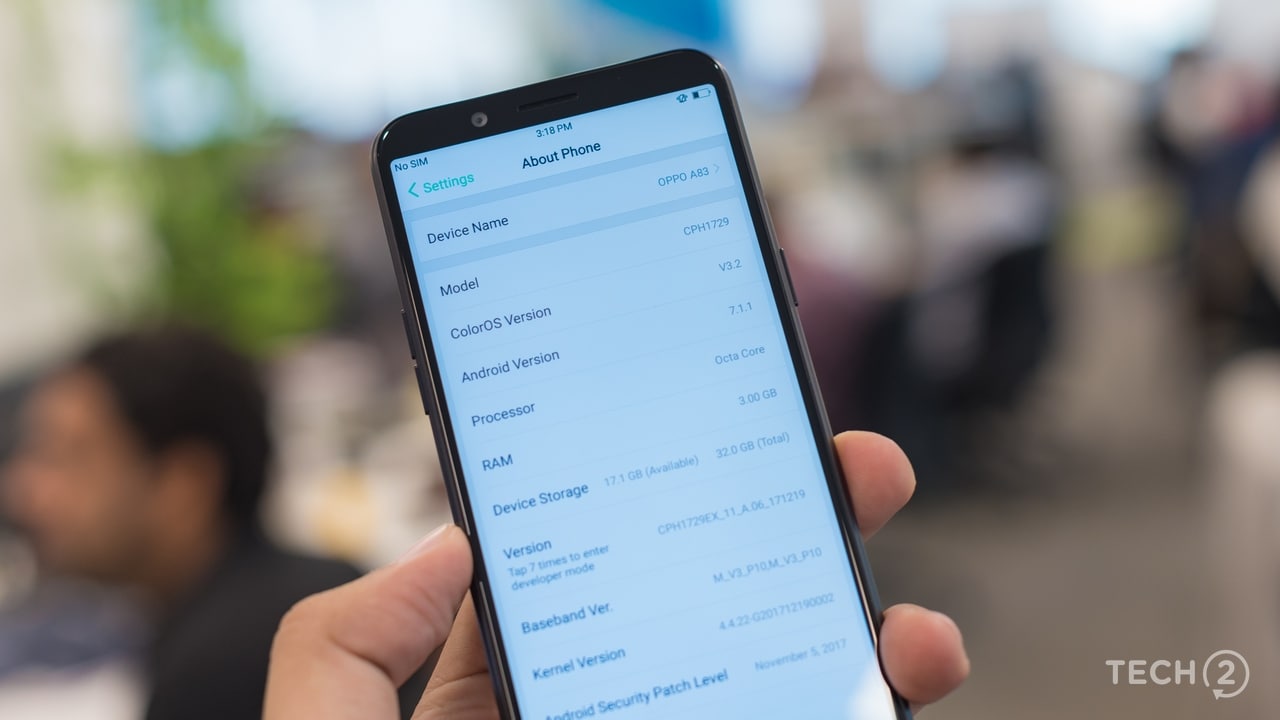 ColourOS feels a bit complicated to use apart from being unfinished. Image: Tech2/Rehan Hooda[/caption] What I did appreciate is that Android Security Patch does see updates and is currently on the February 2018 patch. Another cool feature is the ability to hide the software navigation keys and make use of the entire 18:9 display to run apps in full screen. ColorOS has swipe gestures, similar to the Apple iPhone X, where you can swipe from the bottom end of the display and hold to access recent menu, a short swipe to go to the home screen. [caption id=“attachment_4388801” align=“alignnone” width=“1280”]
ColourOS feels a bit complicated to use apart from being unfinished. Image: Tech2/Rehan Hooda[/caption] What I did appreciate is that Android Security Patch does see updates and is currently on the February 2018 patch. Another cool feature is the ability to hide the software navigation keys and make use of the entire 18:9 display to run apps in full screen. ColorOS has swipe gestures, similar to the Apple iPhone X, where you can swipe from the bottom end of the display and hold to access recent menu, a short swipe to go to the home screen. [caption id=“attachment_4388801” align=“alignnone” width=“1280”] The full-screen swipe gestures are useful but not practical.[/caption] My only gripe with the swiping gesture is that you need to swipe in a particular zone of the bottom end of the display to go back to a previous menu and swipe on the left side to open the control center for toggles. While I thought this would be a short learning curve, it wasn’t and I deactivated the gesture navigation feature using the phone with software navigation keys for the rest of the review period. Performance: 7/10 While ColorOS 3.2 seems light, it’s quite a bit of resource hog, in the sense that it makes a Helio P23 clocked at 2.5 GHz work really hard. There are micro stutters everywhere, but these are only visible to a trained eye so most buyers will not notice these. In short, ColorOS is not as consistent, stable or smooth as Xiaomi’s MIUI 9. Another indicator was the space ColorOS takes up, which in the case of the A83 was around a whopping 10 GB. To make matters worse, the device only packs in 32 GB of internal storage, which means that you are left with 22 GB of space, which is pretty less even for the casual user who clicks plenty of photos and video and receives lots of WhatsApp ‘Good Morning’ messages (on family groups). Still then, Oppo has included a dedicated microSD card slot, but most apps these days cannot be moved to them to the microSD card usually serves as storage for just photos and videos and not apps and app data. You have to remember that Xiaomi offers 64 GB of internal storage even on its base 4 GB RAM model.
The full-screen swipe gestures are useful but not practical.[/caption] My only gripe with the swiping gesture is that you need to swipe in a particular zone of the bottom end of the display to go back to a previous menu and swipe on the left side to open the control center for toggles. While I thought this would be a short learning curve, it wasn’t and I deactivated the gesture navigation feature using the phone with software navigation keys for the rest of the review period. Performance: 7/10 While ColorOS 3.2 seems light, it’s quite a bit of resource hog, in the sense that it makes a Helio P23 clocked at 2.5 GHz work really hard. There are micro stutters everywhere, but these are only visible to a trained eye so most buyers will not notice these. In short, ColorOS is not as consistent, stable or smooth as Xiaomi’s MIUI 9. Another indicator was the space ColorOS takes up, which in the case of the A83 was around a whopping 10 GB. To make matters worse, the device only packs in 32 GB of internal storage, which means that you are left with 22 GB of space, which is pretty less even for the casual user who clicks plenty of photos and video and receives lots of WhatsApp ‘Good Morning’ messages (on family groups). Still then, Oppo has included a dedicated microSD card slot, but most apps these days cannot be moved to them to the microSD card usually serves as storage for just photos and videos and not apps and app data. You have to remember that Xiaomi offers 64 GB of internal storage even on its base 4 GB RAM model.
Oppo A83 Performance Benchmarks Infogram
With a octa-core SoC clocked at 2.5 GHz, I expected gaming to be a smooth experience. Thanks to the paltry amount of RAM in this device (3 GB), it wasn’t. Asphalt 8 Xtreme saw stuttering between menus, and even slow loading of 3D objects within those menus. The game was unplayable at high texture and and HDPI settings, something that Note 5 Pro pulled off admirably. With dropping frames the game was also unplayable at LDPI and low details. Playing other popular 3D titles like Dead Trigger 2 did not showcase such dropped frame rates so my best guess is that game hasn’t been optimised to run on a MediaTek Helio P23 (which would also explain the abnormally low OpenGL scores in the 3D Mark benchmark tests). Real Racing 3 ran smoothly but at a visibly lower resolution and lower textures. [caption id=“attachment_4388613” align=“alignnone” width=“1280”] The speaker located a the bottom end did not sound too great. Image: Tech2/Rehan Hooda[/caption] The speaker on the Oppo A83 sounded tinny and the audio would tear when played at high volumes. Through the headphones (not Oppo’s), the audio sounded fine with heavier bass notes, but nothing out of the ordinary here. Call quality was decent, and the speaker as I mentioned earlier, was not all that loud. And this is where I also write about the missing fingerprint reader. With the ’not so secure’ face unlock on, I rarely needed it in the office or at home. Switching the lights off or in dimly lit settings, get ready to type that PIN over and over again, as the front-facing camera struggles to read your face in low light conditions. Bottomline? Oppo should have offered a fingerprint reader on the back as an optional screen unlock feature. Camera: 6.5/10 Simply put, the camera performance on the Xiaomi Redmi Note 5 Pro is leagues ahead of the Oppo A83. While Oppo delivered some great selfie smartphones in the past, the competition has not just caught up but left it in the dust lately. While Xiaomi’s cameras were nothing worth talking about on the Note 4, the Note 5 Pro saw a drastic change, which raised the bar for smartphone photography in the sub Rs 15,000 price bracket. And I’m not just talking about the rear camera, but the front-facing camera as well. [caption id=“attachment_4388607” align=“alignnone” width=“1280”]
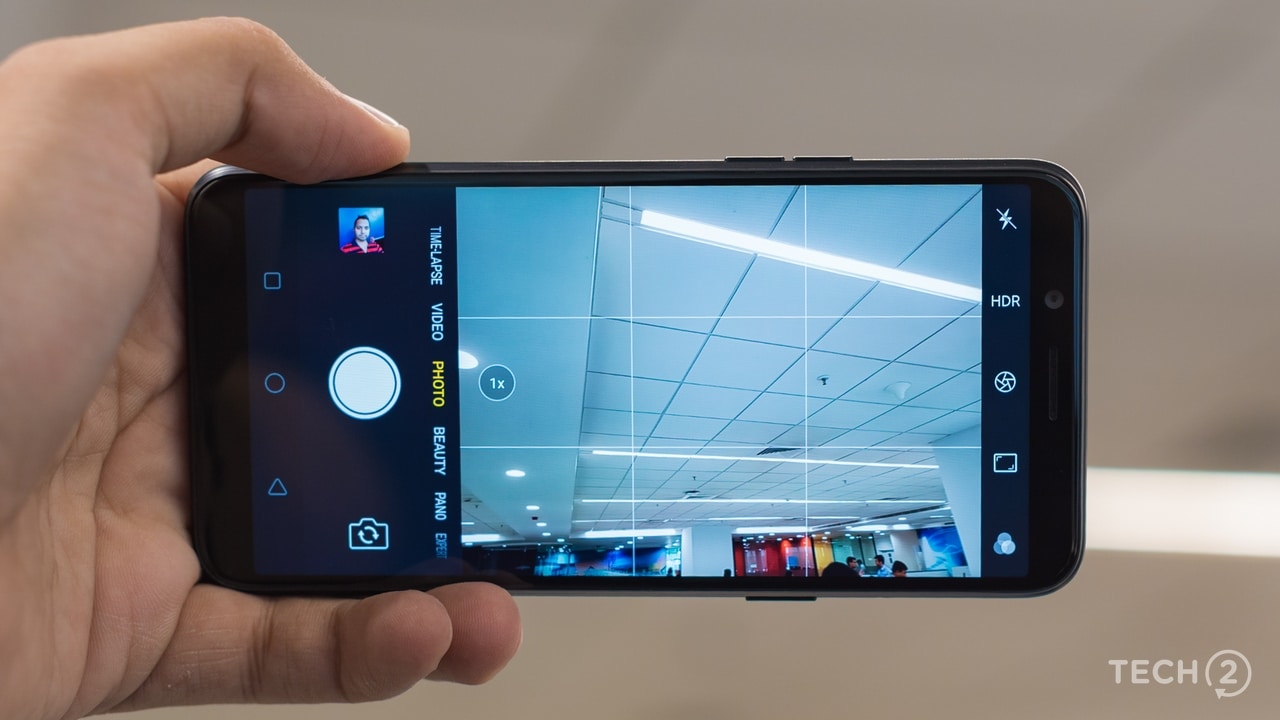 The camera interface also takes inspiration from Apple and is easy to use. Image: Tech2/Rehan Hooda[/caption] From a hardware perspective, you will find that the Oppo A83 unlike the Note 5 Pro and the Honor 9 Lite, lacks a dual camera setup. On the software side, there’s no “bokehlicious” portrait mode on the rear camera. The front-facing selfie camera does offer software portrait mode, but it’s not as good as the one on the Redmi Note 5 Pro.
The camera interface also takes inspiration from Apple and is easy to use. Image: Tech2/Rehan Hooda[/caption] From a hardware perspective, you will find that the Oppo A83 unlike the Note 5 Pro and the Honor 9 Lite, lacks a dual camera setup. On the software side, there’s no “bokehlicious” portrait mode on the rear camera. The front-facing selfie camera does offer software portrait mode, but it’s not as good as the one on the Redmi Note 5 Pro.
The images from the Oppo A83’s camera are decent. Resolved details are on the low end, and this applies to photos shot in daylight. Sharpness levels are low and the camera software has the tendency to overexpose, leaving you with bright highlights. In some shooting scenarios outdoors and at noon even the HDR mode could not come to the rescue. In low light, textures were blotchy and not up to the mark even for a smartphone in the sub Rs 15,000 bracket. The autofocus system was a bit slow in low light. In daylight, the camera was quick to focus but at times focused on the wrong object or subject when shooting close-ups. [caption id=“attachment_4388623” align=“alignnone” width=“1280”]
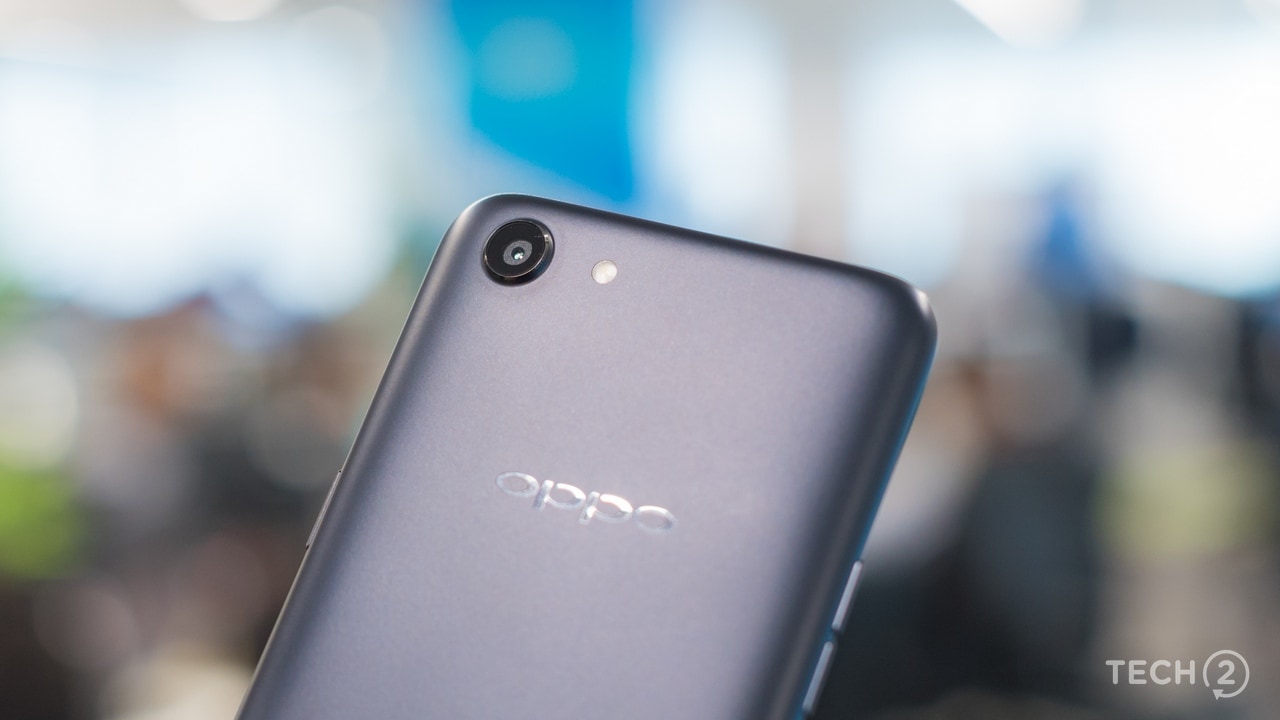 The camera falls short in comparison to the Xiaomi Redmi Note 5 Pro. Image: Tech2/Rehan Hooda[/caption] Video recording was limited to 30 fps at 1080p, but showcased a lot of dropped frames, and looked jittery. The video recording using the selfie camera was more stable and better. In both instances, the Xiaomi Redmi Note 5 Pro performed better. Plus the Note 5 Pro offers some flawless portrait modes using both the front and the rear camera. Battery: 7.5/10 With a 3,180 mAh battery onboard, I did not expect to see any battery-related shortcomings. The Oppo A83 delivered on this front easily, providing a whole day of battery life on single charge. Light use with limited gaming along with the usual messaging apps, could easily see it go past a day. [caption id=“attachment_4388799” align=“alignnone” width=“1280”]
The camera falls short in comparison to the Xiaomi Redmi Note 5 Pro. Image: Tech2/Rehan Hooda[/caption] Video recording was limited to 30 fps at 1080p, but showcased a lot of dropped frames, and looked jittery. The video recording using the selfie camera was more stable and better. In both instances, the Xiaomi Redmi Note 5 Pro performed better. Plus the Note 5 Pro offers some flawless portrait modes using both the front and the rear camera. Battery: 7.5/10 With a 3,180 mAh battery onboard, I did not expect to see any battery-related shortcomings. The Oppo A83 delivered on this front easily, providing a whole day of battery life on single charge. Light use with limited gaming along with the usual messaging apps, could easily see it go past a day. [caption id=“attachment_4388799” align=“alignnone” width=“1280”]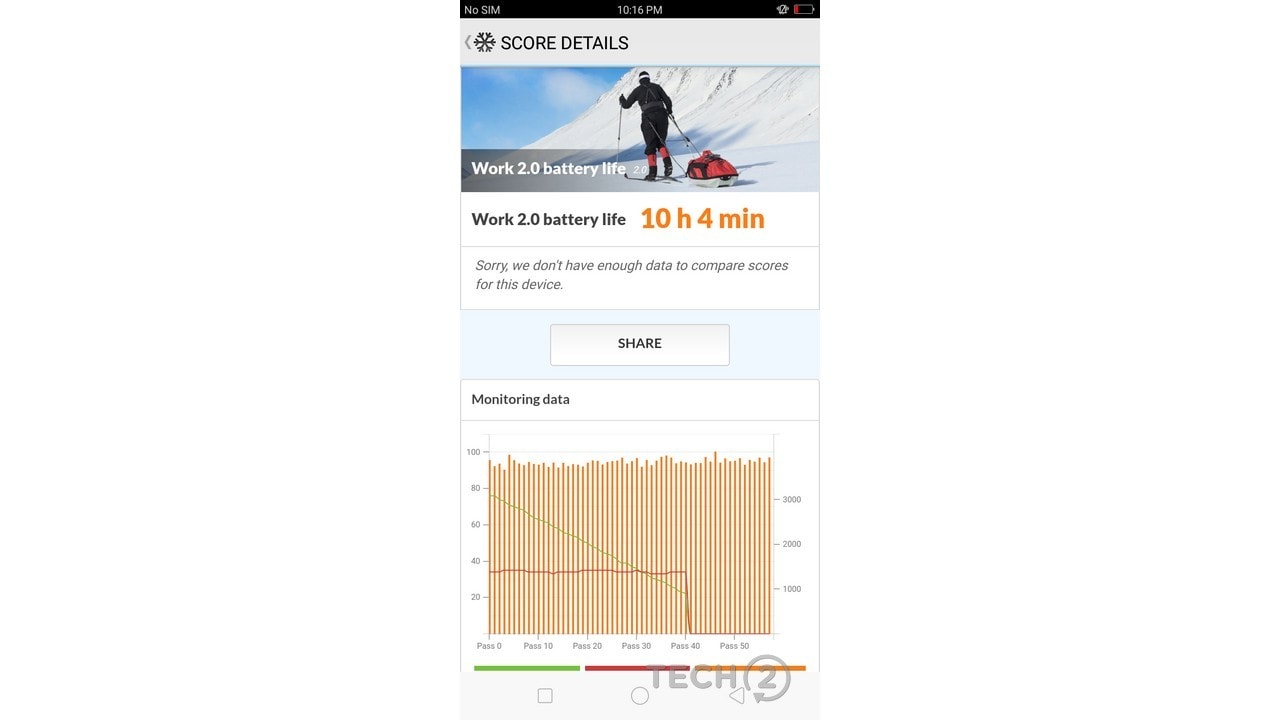 Oppo A83’s battery life was pretty good for a smartphone this slim.[/caption] Our standard PC Mark Work 2.0 Battery Life test gave out decent numbers with the test ending after 10 hours and 4 minutes, which is pretty good for a smartphone that is so thin. The Xiaomi Redmi Note 5 Pro did the same in 12 hours and 44 mins, which is better than the A83. With no VOOC charging, I was worried that the 3,180 mAh battery would take a while. Turns out that the charger included in the box was good enough, charging the smartphone from 0-100 in just one and half hours. Verdict and Pricing in India Since launch, Oppo has been operating in its own space focussing on the ‘selfie smartphone’. While the formula worked in the past, the competition has caught up. Xiaomi delivered a surprising competitor with its
**Redmi Note 5 Pro** (at Rs 13,999) that raises the bar not just for the selfie camera, but the entire budget smartphone segment. [caption id=“attachment_4388619” align=“alignnone” width=“1280”]
Oppo A83’s battery life was pretty good for a smartphone this slim.[/caption] Our standard PC Mark Work 2.0 Battery Life test gave out decent numbers with the test ending after 10 hours and 4 minutes, which is pretty good for a smartphone that is so thin. The Xiaomi Redmi Note 5 Pro did the same in 12 hours and 44 mins, which is better than the A83. With no VOOC charging, I was worried that the 3,180 mAh battery would take a while. Turns out that the charger included in the box was good enough, charging the smartphone from 0-100 in just one and half hours. Verdict and Pricing in India Since launch, Oppo has been operating in its own space focussing on the ‘selfie smartphone’. While the formula worked in the past, the competition has caught up. Xiaomi delivered a surprising competitor with its
**Redmi Note 5 Pro** (at Rs 13,999) that raises the bar not just for the selfie camera, but the entire budget smartphone segment. [caption id=“attachment_4388619” align=“alignnone” width=“1280”] Oppo really didn’t expect the competition to grow so quickly. Image: Tech2/Rehan Hooda[/caption] Going by the numbers, the
**Honor 9 Lite** (at Rs 10,999 for the 2 GB RAM model) looks better and offers better features and hardware for your buck. And both of the above smartphones put the Oppo A83 in a rather tight spot despite its Rs 12,320 online price. It’s not fantastic with selfies and neither is it big on features, which makes it hard to recommend given its current selling price.


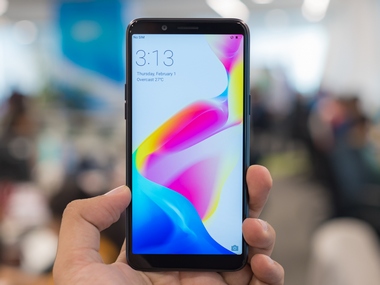)
)
)
)
)
)
)
)
)



